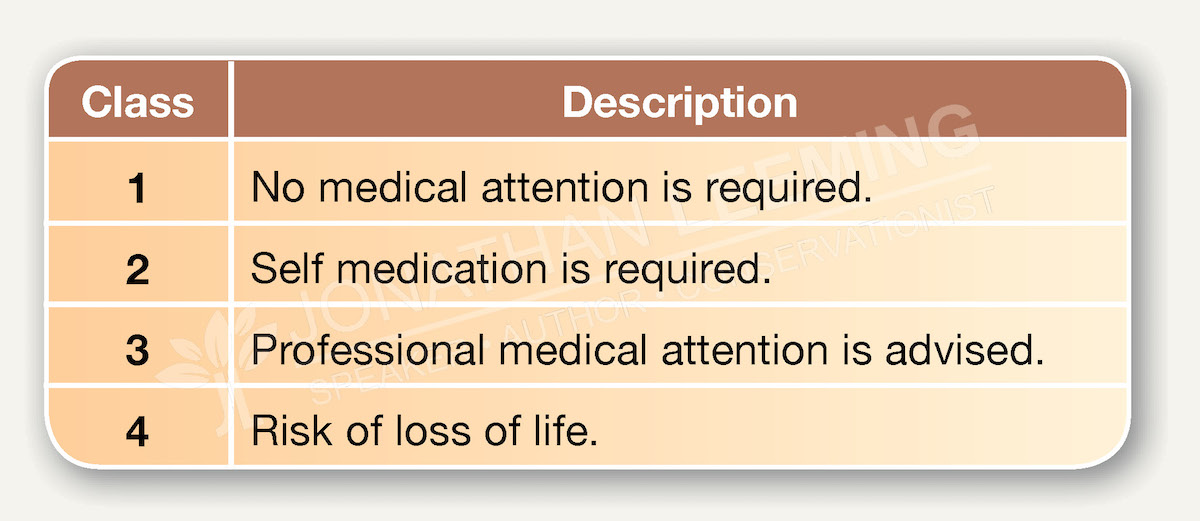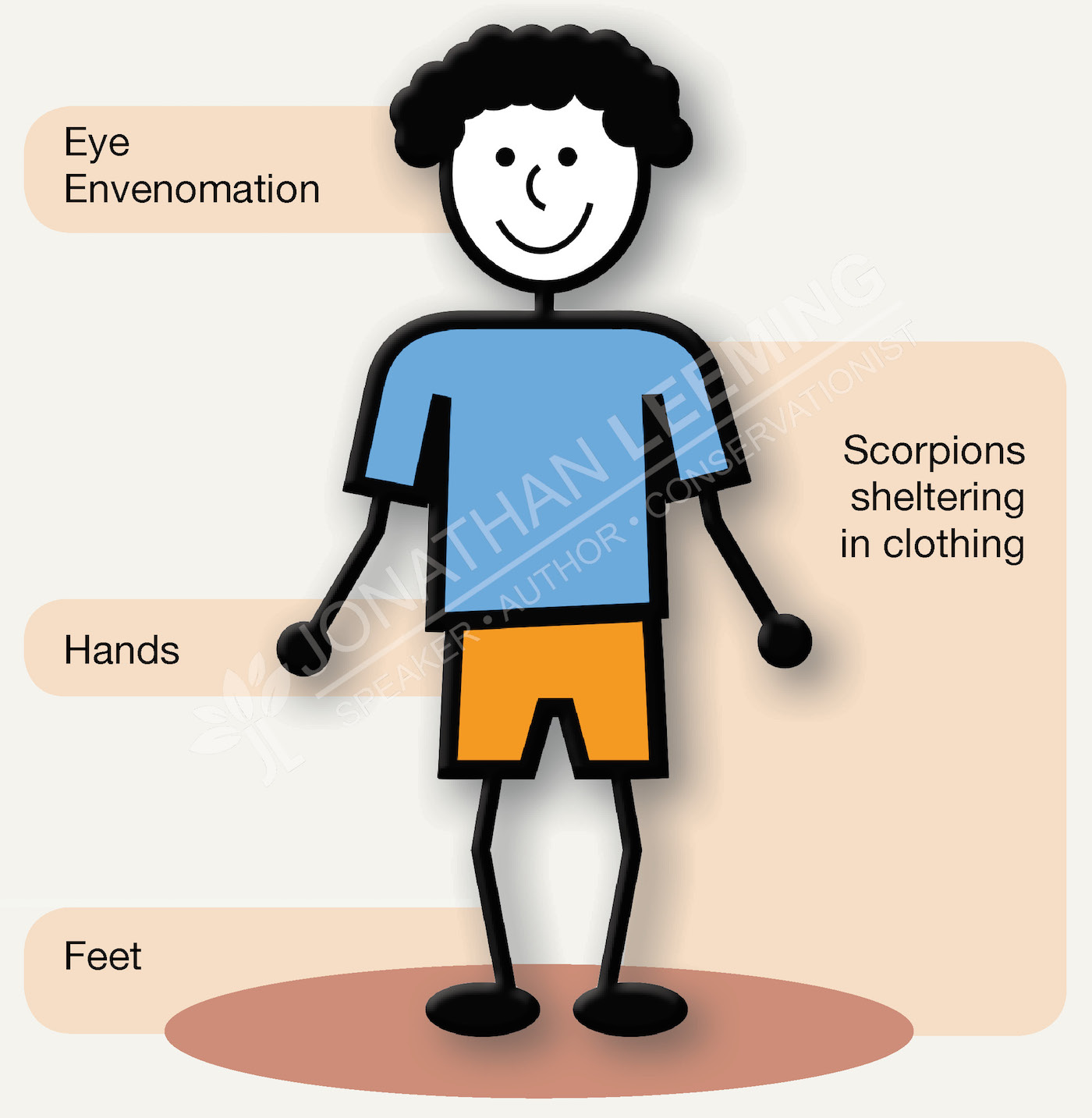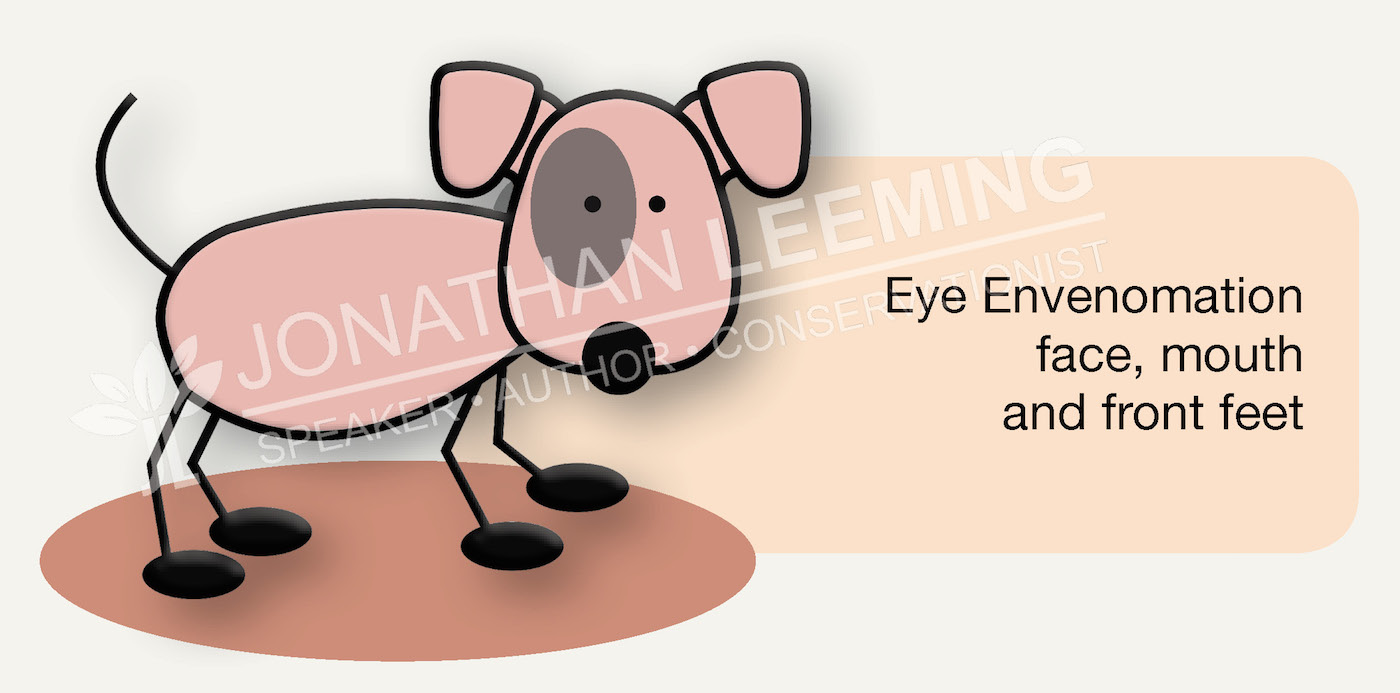In southern Africa, the vast majority of scorpion stings result in little more than class 1 and 2 symptoms, requiring no professional medical intervention whatsoever. At the other extreme, southern Africa is home to 2 species of scorpion that are collectively responsible for an estimated 8 to 12 deaths per year.
Scorpion venom disrupts the nervous system in various ways and at various levels. Understanding the severity of symptoms is vital for appreciating the urgency of the situation, pre-empting any future symptoms, and challenges that may occur while transporting the patient to medical assistance.
The following classes of symptoms are the foundations for effective first response.

These classes also relate to bites and stings from other venomous animals, such as spiders, snakes, stingrays, stone fish, centipedes, bees and wasps. These classes do not increase in equal steps nor on a linear scale, but rather define boundaries, indicate outcomes and required action. These classes relate to the sum of the patient’s symptoms.
Scorpion sting symptoms can be divided into immediate and delayed symptoms. Recognising and understanding how symptoms develop is important for effective first response.
Understanding how symptoms develop and the associated timeframes, offer insight into the progression of symptoms from immediate to delayed.
The risk of bacterial infection is low because the sting site does not develop into an open lesion. The antibacterial properties of scorpion venom may also reduce the risk of bacterial infection. Use of antihistamines is not advised unless the patient is experiencing an allergic reaction. Life threatening allergic reactions to scorpion venom are very rare.
The majority of scorpion stings in humans occur when picking up objects under or in which a scorpion is sheltering, or when someone who is barefoot or is wearing open sandals stands on the scorpion. Animals are stung more often on the face, mouth or front feet.


Antivenom for the treatment of Southern African scorpion stings is manufactured by the South African Vaccine Producers (SAVP) at the National Health Laboratories in Johannesburg, South Africa.
An initial dose of 10ml (2 vials) is required intravenously, with an additional dose of 5ml (1 vial) every 6 hours until the symptoms improve. This additional dose is not always necessary. The same dose is used for children and adults. The effectiveness of antivenom is gradual, peaking between 2 and 6 hours after administration. SAVP scorpion antivenom is ineffective at treating a patient who has venom in the eyes. Allergic reactions to SAVP scorpion antivenom are uncommon or usually mild.
SAVP Scorpion Antivenom is the only antivenom that has been effective against the treatment of class 3 and 4 symptoms. However, there has been a disruption in production of this life saving drug. As at March 2025 stocks of SAVP Scorpion Antivenom have been depleted.
The SAVP have indicated that Polyvalent Snake, Scorpion antivenom available for the first week of December 2025, and Monovalent Boomslang and Latrodectus antivenom shortly after.
In the meantime, the door is open to alternative antivenom to be registered for use in Southern Africa. In desperation, some medical facilities are using dangerously poor quality and ineffective antivenom that is not manufactured to treat the sting of Southern African scorpions.
For an update on the latest antivenom situation in Southern Africa, please send me an email at Info@JonathanLeeming.com

This content is the product of many hours of work based upon years of experience. If you found it useful or of value, then please consider a small donation to help me offer more content like this!
I'm on a mission to reduce the burden of spider bites and scorpion stings across Southern Africa!
Newsletter | Public Events | Books & Workbooks | Presentations | Activities |Professional Development | Shop
